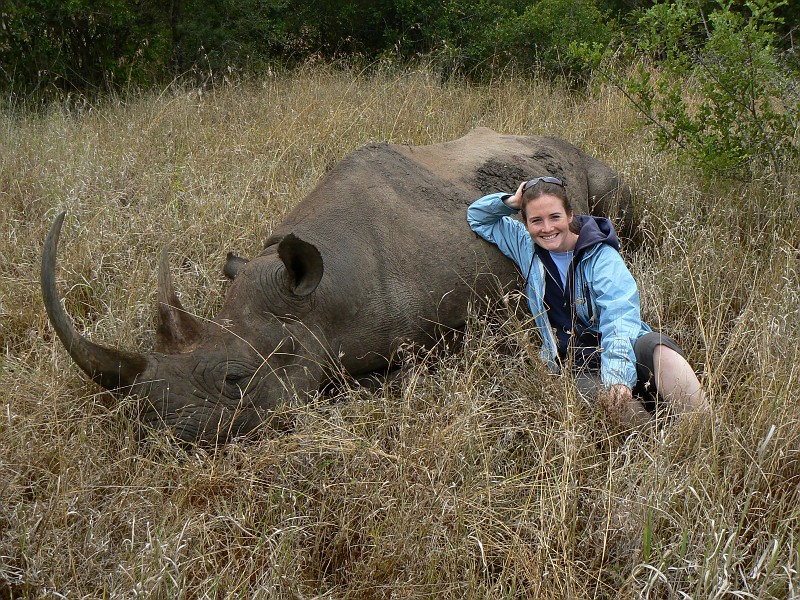
I figured I ought to have a post on antelopes as one of my first three postings. And, since I will be talking predominantly about tragelaphine (spiral-horned) antelopes, I figured I'd start off with some other kind of antelope.
Meet the waterbuck,
Kobus ellipsiprymnus. I came across this male
while in the Aberdare Mountains right near the equator in Kenya, probably at an elevation of 7000-9000 feet. Waterbuck have, in my limited experience, an air of unassuming stateliness and mild curiosity about them. This guy stood there looking at me in my vehicle as I approached (slowly). I took entirely too many pictures, assuming that each time I moved the car forward he'd dart away (which is the near-universal response of tragelaphine antelope). But I was able to get surprisingly close to him, and my mid-range camera did pretty well in the patchy light. Waterbuck have such lovely eyes, and their longish, coarse coat makes for wonderful close-up detail. Eventually I did get too close, at about 30 yards, and he ambled off the side of the road, immediately lost in the dense foliage.
Kobus and
Redunca are the only genera in the tribe Reduncini. While I'm not a reduncine antelope specialist (I'd love to know of anyone who is), the size and shape of this animal's horns indicate he's very nearly reached his full size. Probably the base of his horns will become slightly more convex at the base, making for a very weak s-shape there (it's much more exaggerated in lechwe and Nile lechwe). It's not known how exactly horn growth correlates with skeletal growth, tooth eruption or wear, much less with actual age beyond very rough approximations. But from my readings and observations I'd bet he has his adult dentition and his epiphyses (growth plates in his bones) are fused, though perhaps still visible.
One of my long-term goals is to determine how skeletal growth (in terms of both absolute size and state of suture fusion in bones, in the skull and the rest of the body) correlates with horn growth, tooth stage, and coat color. It would be great to be able to then match all of this with actual age, so you can see just how these features change with time, but I sincerely doubt that will happen any time soon.
I don't think that kind of work is currently feasible because most species of antelopes are not in grave danger of extinction, and most are not as "sexy" as elephants, rhinos, lions, cheetahs, etc., so there's little motivation (and therefore funding) to track a population of animals over 5-10 years (or more) in some fashion. You need to do that in order to establish the age of individual animals and to track their morphology over months and years, to see exactly how they change (on the outside, that is) and then try to match it up with data taken from skulls and bones in museums, which 99.9% of the time have no numerical age data.
It's important to get this information in wild animals, because we don't know how exactly being in an enclosed, semi-domesticated state will affect a given animal's growth (although, as I like to say, a bongo comes out more like a bongo than any other kind of animal, whether it's raised in California or Kenya). But, given what we know about the effects of domestication on other animals, it's reasonable to assume the effect is measurable.
That said, having data from known-age animals in an enclosed environment would be better than nothing at all, and I hope to collect that kind of data this coming year in Kenya, by working with various animal orphanages and wildlife rehabilitation centers. As the old (and cynical) maxim goes: "There are two kinds of data: bad data, and no data."
Labels: Aberdares, bovid, goals, growth, reduncini, waterbuck




